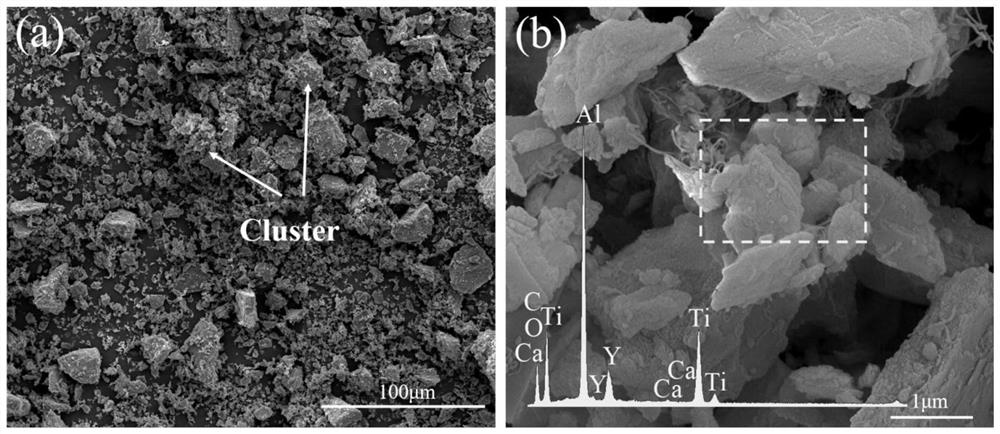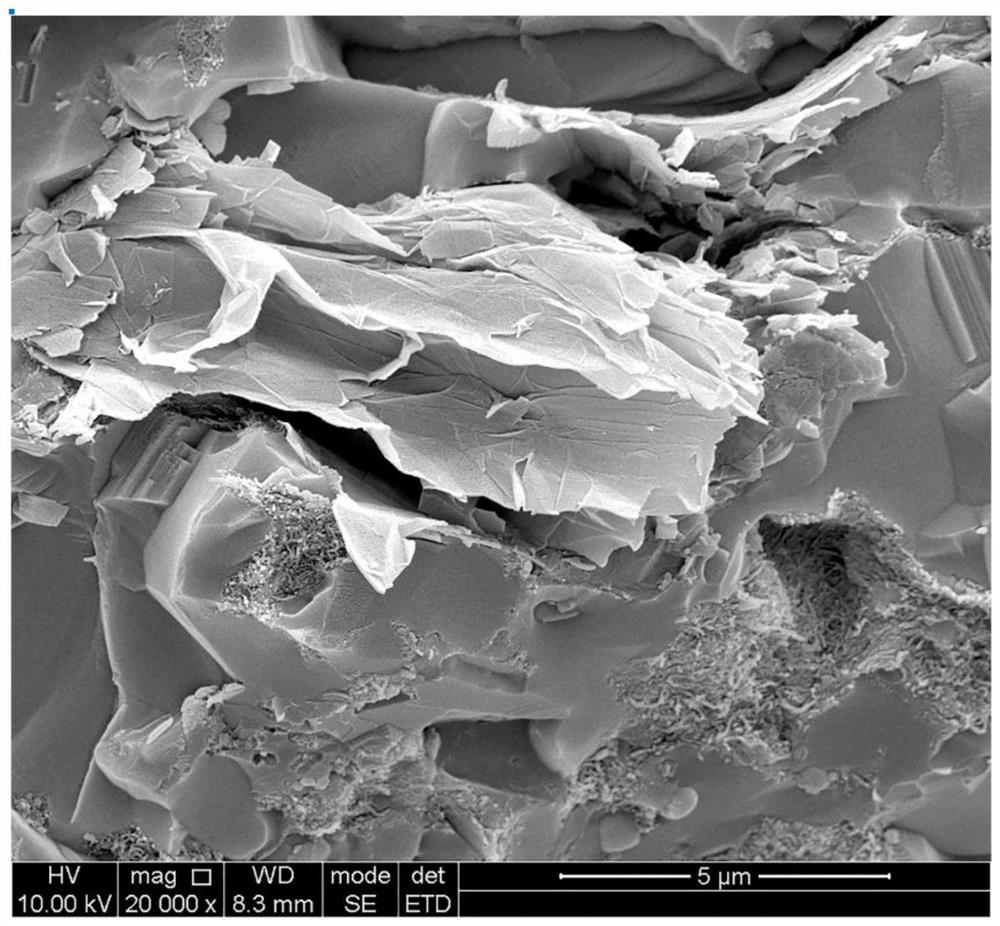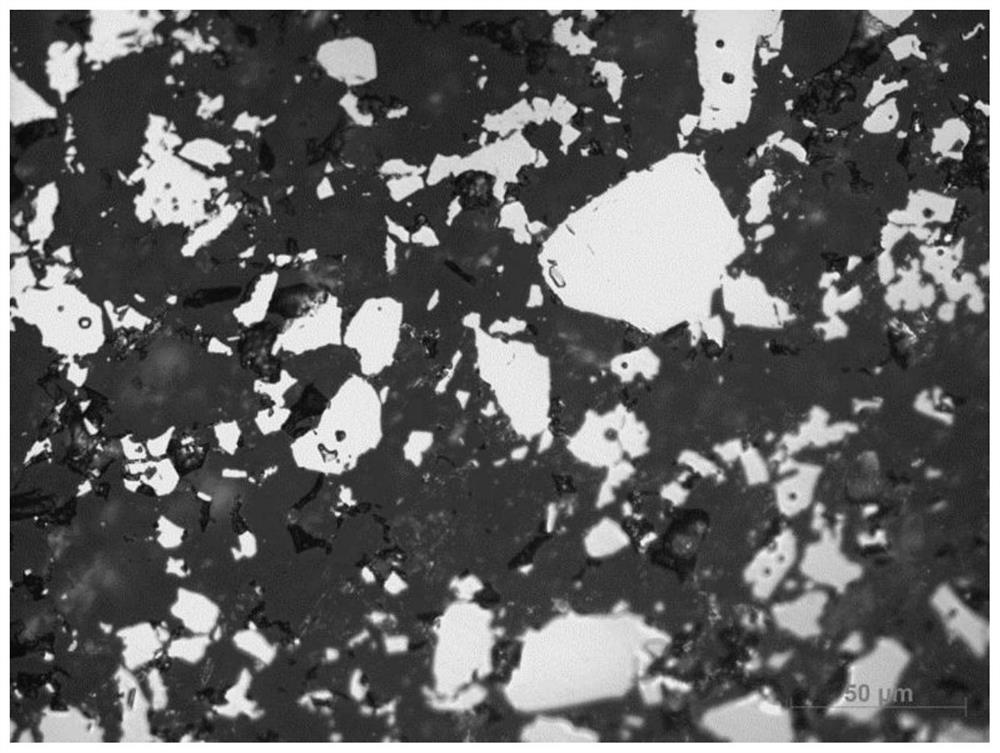A carbon nanotube and graphene synergistically reinforced alumina-based composite material and preparation method thereof
A technology of carbon nanotubes and composite materials, applied in the field of carbon nanotubes and graphene synergistically reinforced alumina-based composite materials and its preparation, can solve the problems of reducing the densification of the overall ceramics, achieve excellent mechanical properties, reduce wear, and porosity low rate effect
- Summary
- Abstract
- Description
- Claims
- Application Information
AI Technical Summary
Problems solved by technology
Method used
Image
Examples
Embodiment 1
[0049] Carbon Nanotube Surface Modification
[0050] Add carbon nanotubes to 10μg / mL gallic acid aqueous solution, and disperse evenly. The ratio of the weight of carbon nanotubes to the volume of gallic acid aqueous solution is 0.1g: 40ml; let it stand for 24h, filter, and take the filter residue at 80°C Vacuum-dried for 2 hours to obtain surface-modified carbon nanotubes.
[0051] By comparing the morphology characteristics of carbon nanotubes treated with surface modification and carbon nanotubes without surface modification, it is found that the surface of modified carbon nanotubes is smooth, the content of impurities is less, and the dispersion is better.
[0052] The carbon nanotubes mentioned in the following examples all refer to the carbon nanotubes obtained after surface modification treatment by the above method.
Embodiment 2
[0054] Graphene Surface Modification
[0055] Add graphene to 0.02μg / mL rutin aqueous solution, and disperse evenly, wherein the ratio of the weight of graphene to the volume of rutin aqueous solution is 0.1g:40ml; let it stand for 24h, filter, take the filter residue and vacuum at 80°C Dry for 2 hours to obtain surface-modified graphene.
[0056] By comparing the morphology characteristics of the surface-modified graphene and the graphene without surface modification, it is found that the surface-modified graphene has a smooth surface, less impurity content, and better dispersion.
[0057] The graphene mentioned in the following examples all refers to the graphene obtained after surface modification treatment by the above-mentioned method.
Embodiment 3
[0059] Carbon nanotube reinforced alumina matrix composite material
[0060] (1) get the surface-modified carbon nanotubes in Example 1; (2) in parts by weight, adopt agate balls and agate ball tanks to prepare 1 part of surface-modified carbon nanotubes and titanium carbide powder 29.445 parts, 0.5 parts of calcium oxide powder, 0.35 parts of yttrium oxide powder, and 68.705 parts of alumina powder were mixed by ball milling, the speed of rotation was 350 rpm, and the ball milling time was 120 min; (3) The composite powder was subjected to discharge plasma sintering, The temperature was raised to 1600°C at 100°C / min, and the holding time was 2h; the pressure of spark plasma sintering was 50MPa, and the holding time was 5min, and then cooled with the furnace to obtain carbon nanotube and graphene synergistically reinforced alumina-based composite materials.
PUM
| Property | Measurement | Unit |
|---|---|---|
| concentration | aaaaa | aaaaa |
| concentration | aaaaa | aaaaa |
| concentration | aaaaa | aaaaa |
Abstract
Description
Claims
Application Information
 Login to View More
Login to View More - R&D Engineer
- R&D Manager
- IP Professional
- Industry Leading Data Capabilities
- Powerful AI technology
- Patent DNA Extraction
Browse by: Latest US Patents, China's latest patents, Technical Efficacy Thesaurus, Application Domain, Technology Topic, Popular Technical Reports.
© 2024 PatSnap. All rights reserved.Legal|Privacy policy|Modern Slavery Act Transparency Statement|Sitemap|About US| Contact US: help@patsnap.com










